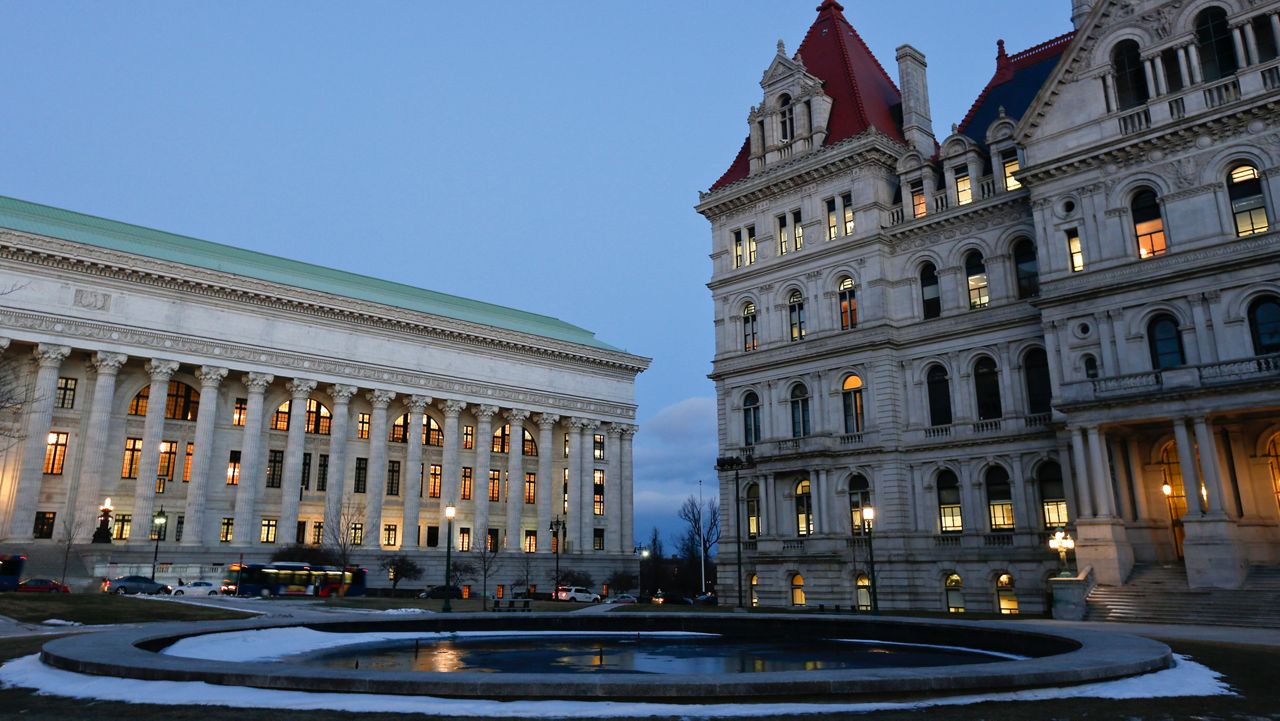The Foundation Aid formula was put into place during the tenure of Governor Eliot Spitzer after the resolution of the 13-year long Campaign for Fiscal Equity lawsuit. It’s the most important formula of the handful of calculations that are used to fund schools.
But Foundation Aid is tempered by other, older political motives like “save –harmless” which was put into place during the Carey administration, and the “shares agreement” that the governor referenced in his budget address, and which former Senate Majority Leader Dean Skelos once referred to as “sacred.”
The shares agreement has been stable for years at these percentages:
- New York City receives 38.86%
- Long Island receives 12.96%
- Upstate receives the rest
Foundation Aid is the primary formula that funds our schools. While it’s out-of-date and many say underfunded, it is a progressive formula, which means poor schools are supposed to get more money with its use.
But the metrics that inform the formula are, in some cases, based on the 2000 Census. This aggravates school finance experts like Rick Timbs of the Statewide School Finance Consortium.
“You read through the 2021 budget and you see ‘the 2006 regional cost index.’ Why are we using a 2006 cost index? There has been no attempt to update the data in the formula,” Timbs said.
This brings us to a divide in the education community around Foundation Aid. On one side, there are groups who say to update it using the correct information and other groups simply say, “fund it.”
By reconstituting the formula, the governor is subtly changing that debate.
What Cuomo Is Proposing?
In his budget, Governor Cuomo includes expenses in the Foundation Aid formula that are currently calculated outside the formula. Things like BOCES aid, high tax aid, and library aid.
This new, bulkier calculation is making some advocates nervous because schools think they are owed more under the formula the way it currently exists in the law.
“We are troubled by the apparent effort to move into Foundation Aid separate funding streams that schools have relied on like BOCES, and Career & Technical education,” said State Senator Shelley Mayer, the chair of the Senate Education Committee.
Mayer is also unhappy with the amount of funding the governor has committed to education. That said, Senator Mayer sounded optimistic about the governor’s additions to the education curricula.
“I was pleased to hear about the allocation for $1 million for a statewide curriculum on diversity and tolerance. Our conference is very concerned about these issues,” Mayer said.
Some activists see problems on the horizon.
“He’s doing what we tried not to do in CFE which is play Robin Hood,” said CFE attorney Michael Rebell, executive director of the Campaign for Educational Equity at Teachers College, Columbia University. Rebell is currently suing the state.
“Instead of finding additional money for high-needs districts that clearly need it, he’s taking it from other districts and is undermining their programs in order to provide additional crumbs to poor districts,” Rebell said.
"Alarming" Changes?
Last year, the governor proposed that districts receive in Foundation Aid what they got the year prior, plus whatever “tier” would be the most favorable to them (tiers are special calculations. For example, a district might be eligible for a tier if it’s had an increase in English Language Learners.)
The governor had initially provided four tier options that districts could choose from to calculate their increase in Foundation Aid. The Legislature then added a few of their own. This year, the governor is, again, adding to that calculation.
Under his 2021 proposal, districts would additionally get a bulkier Foundation Aid payment — one that includes expense-based formulas; i.e. BOCES, textbooks, high tax aid; library aid — the issue that Senator Mayer is concerned about.
Bob Lowry of the New York State Council of School Superintendents says the proposed consolidation is alarming to school district leaders. A downside is that it will make it more difficult for districts to predict how much funding they will receive from the state.
“Before this change, if a district buys more services from BOCES, it knows it will get more BOCES aid, it is that simple,” explains Lowry.
But when BOCES is lumped into the larger Foundation Aid formula, it’s tougher for districts to figure out.
“Districts have no way to predict from year to year what they will get in Foundation Aid,” Lowry added.
Sayonara Shares?
The upside to the governor’s proposal is that he wants to address the shares agreement. According to Lowry, “one of the reasons that school aid is unpredictable is because of the need to uphold regional shares which necessitates working backwards to produce the result."
In other words, the shares agreement makes education aid like something out of Wag the Dog. Or as Lowry says, “it compels working backwards.”



